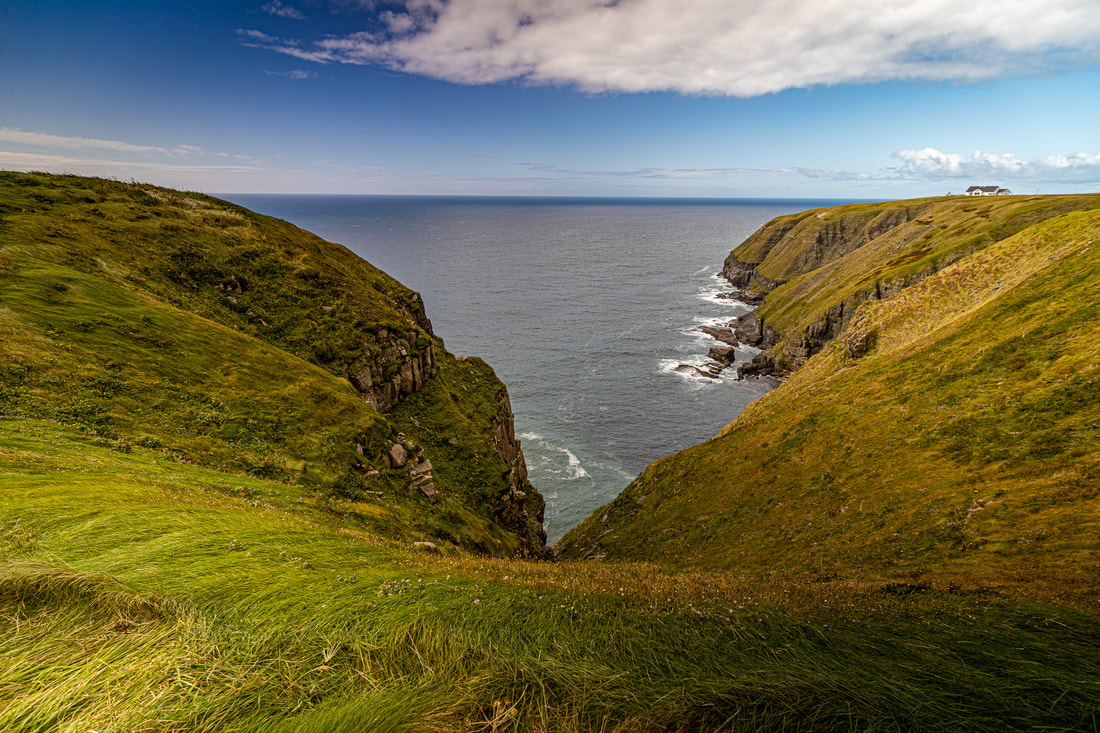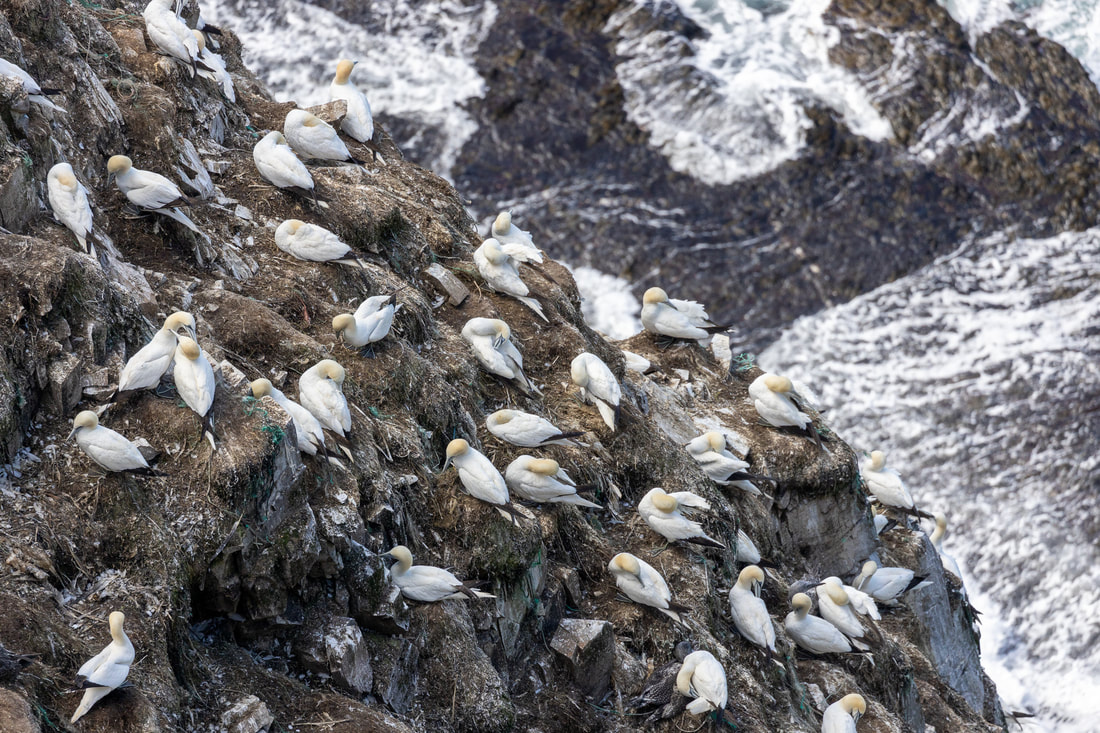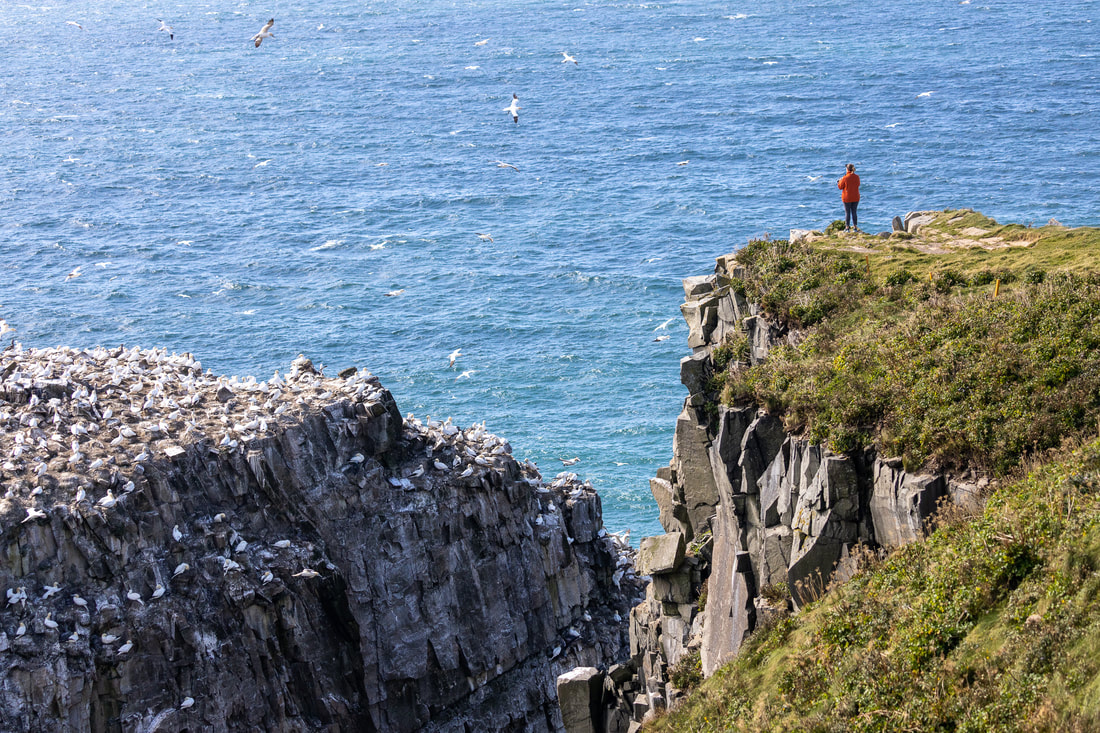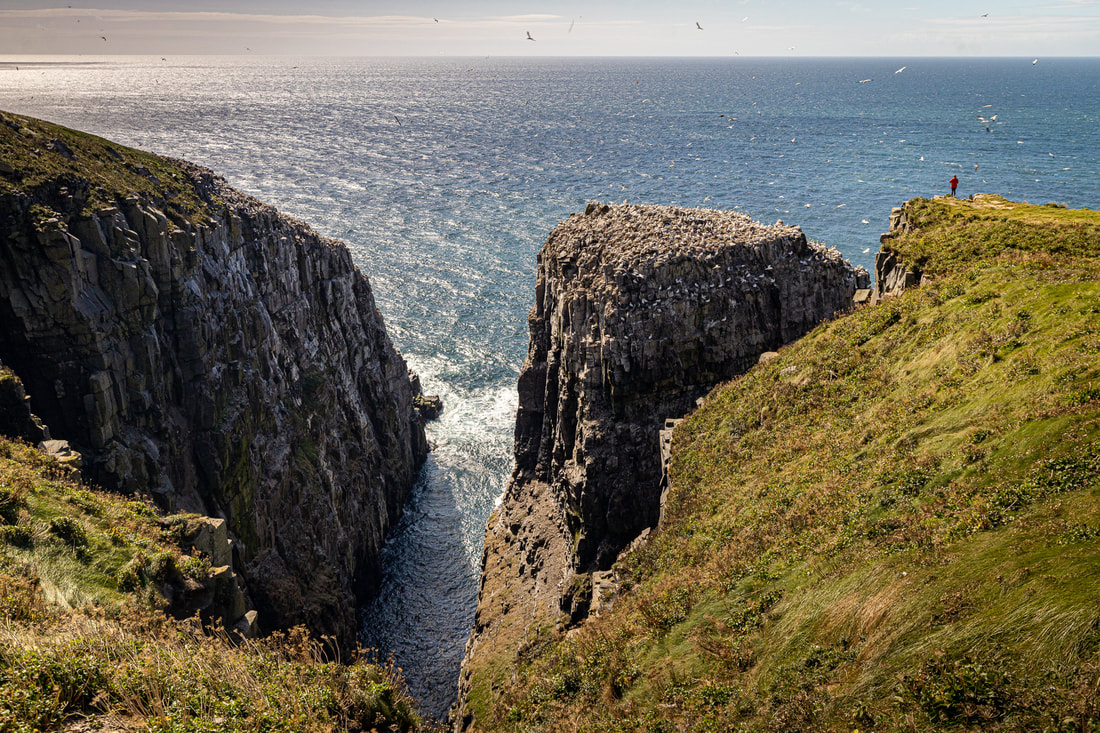|
One my favourite places to visit when in Newfoundland and Labrador has to be Cape St. Mary's Ecological Reserve. Located on the southern most tip of the Avalon peninsula, the Cape is easily accessible from St. John's and can reached in about two hours. However, upon arrival you'll feel like you'll feel like you're on the side of the planet. This remote feeling is uniquely Newfoundland, with countless areas that make you feel like you're the only one there. There is a working lighthouse and a very well kept interpretation centre operated by friendly, welcoming staff. This is an ecological reserve like very few others. If you're into bird watching by the thousands, this is the place you must go. From the Newfoundland and Labrador Tourism website: "Thousands of gulls, razorbills, common murres, black-legged kittiwakes, northern gannets, and double-crested and great cormorants nest here. Where 20,000 scoters, long-tailed ducks, harlequin, dovekies, thick-billed murres, and kittiwakes winter. This captivating area is one of seven protected seabird ecological reserves." Not just for bird watchers, the rugged shorelines, hundred meter cliffs, and rolling grassland is a great spot for landscape photographers. For me, the real attraction is the opportunity to photograph the landscape, while the birds are the icing on the cake. You're almost guaranteed at least a few good keepsake photos from here, no matter the weather. So let's talk about the weather. It's never not windy. The reserve is quite exposed to the North Atlantic and the numerous winds that pass through this part of the province. While it can be warm, the wind is a constant reminder of where you are. There is a relatively short trail that ends at the main nesting area. The best way to describe the scene would be to imagine you're at an IMAX theatre, but in real life. Massive Gannets with a nearly six foot wingspan soar all around you squawking, seemingly unbothered by your presence. And your presence is known, because you can stand at the closest edge to their nesting spot, where their lives unfold before your eyes.
I wouldn't classify myself as a bird photographer, but given your proximity to these birds, you become one. I would recommend bringing a 16-35mm wide angle lens for the landscape shots and either a 70-200mm for capturing flying birds, or a 100-400mm for getting close to nesting birds. With any lens you choose, you'll be rewarded.
0 Comments
Leave a Reply. |
Wayne Parsons
Documenting my experiences and travels through photography. Archives
June 2024
Categories |








 RSS Feed
RSS Feed